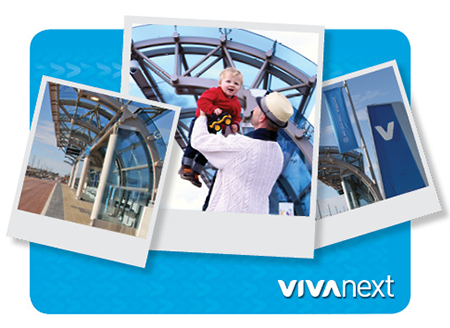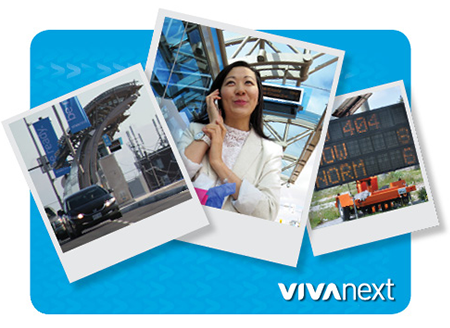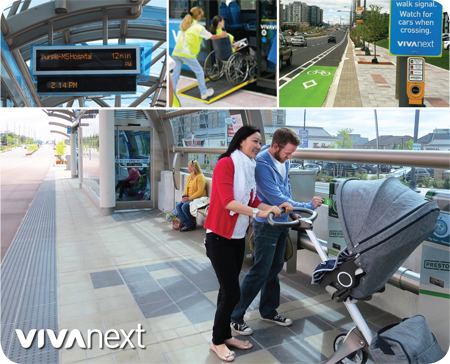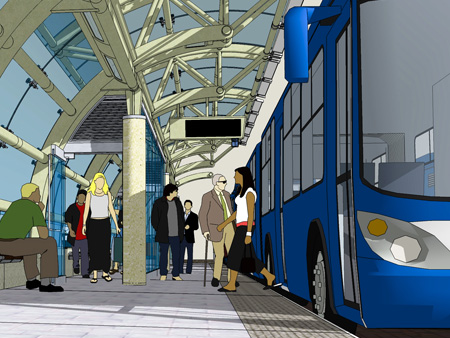The rapidway along Davis Drive from Yonge Street to the 404 opens for service Sunday. Viva yellow will start rolling down Davis Drive at 6:52 am, starting at the 404 park and ride lot and travelling westbound, and then every 15 minutes after that!
We excited to launch the service as well as all the amenities that go with it – the wide, pedestrian-friendly, tree-lined boulevards and sleek, modern vivastations, as well as the dedicated centre lanes that will allow riders to enjoy faster and more consistent travel. New vivastations will open at Parkside/Longford, Main Street, and South Lake Hospital.
Vivastations will be directly accessible from crosswalks at signalled intersections. Pedestrian signals come with an audible tone and visual countdown as additional safety features.
The stations will include arched glass canopies inspired by transportation architecture from historic and modern European examples. The 27-metre glass canopy will offer passengers protection from the elements, and include a nine-metre enclosed and heated waiting area. At the stations, you can enjoy all the existing Viva technologies you love: off-board fare collection, real-time arrivals information, Presto payment and new card readers. Safety and accessibility features include textured surfaces near platform edges, level boarding from the platform to the bus, a public address system for updating riders, security cameras and an emergency call button.
Once the rapidway opens on Sunday, drivers need to be aware of how the street has changed as they make turns on Davis Drive. Red asphalt indicates a bus only lane, so drive with care. Emergency vehicles are permitted to access the rapidways should they need to, but they will have their flashing lights on for safety.
In just a few short days the wait will be over, and we can all celebrate the end of construction and the beginning of rapid transit in Newmarket!






